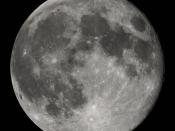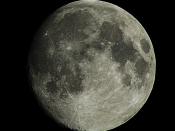Earth's Tides
Gravity is the key to the Earth's rising and falling tides. The combined
gravitational effects of the Sun and the Moon constantly pull the world's oceans
in different directions and create tidal effects. But there are several other
factors that complicate this basic process. Friction, the Earth's rotation, the
tilt of its axis and the gravitational pull given off by the Sun and Moon that
affects Earth's atmosphere. These forces together conspire to make our planet's
oceans into a battleground. These forces tug the oceans this way and that way
around the globe, thus creating high tides and low tides.
The Moon's gravity stretches the earth into an oval. The effect is so tiny
that the solid parts of the planet are distorted by little more than eight
inches. But because of of water's fluidity, the effect on the oceans is more
noticeable. At the point on the Earth directly beneath the Moon, the ocean is
tugged into a bulge of high water.
At the same time, a second tidal bulge forms
on the opposite side of the planet. This is partly a result of the centrifugal
force created by the Moon and Earth's combined rotation around their common
center of mass, a theoretical point called the barycenter.
Because the Earth spins on its axis once every 24 hours, the two bulges sweep
around the planet in waves, creating two high tides per day at every point on
the globe. But the twice daily cycle is complicated by he fact that the Earth
is tilted, which puts the Moon alternately to the north and south of the
equator. This creates slight differences between the two tide each day and adds
a daily set of local variations to this natural rhythm.
A further complication is added by the Sun,


